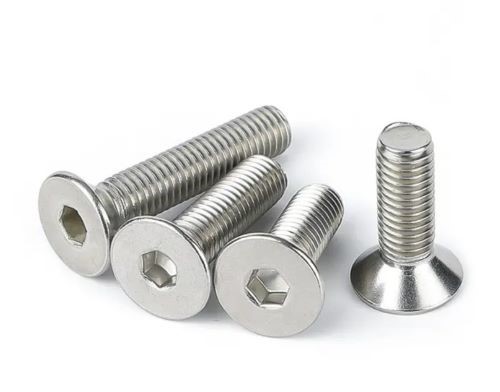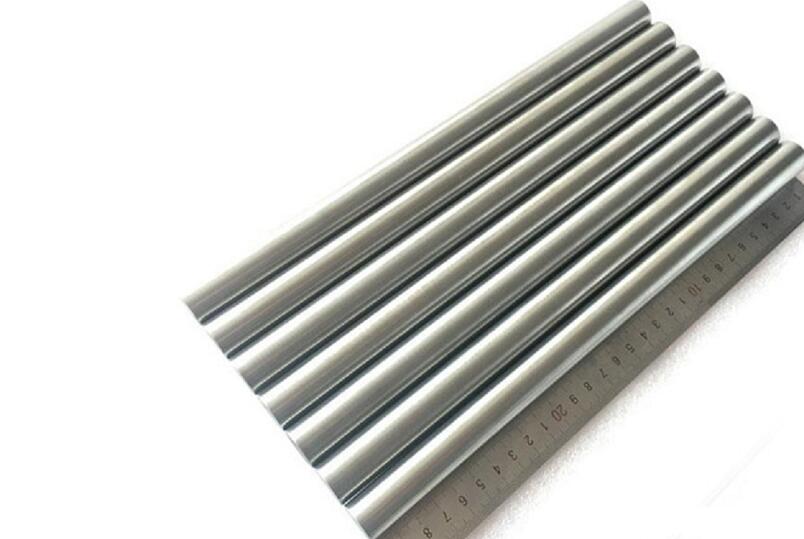
Introduction A range of metals has been utilized and explored ever since the Bronze Age. You can find metallic equipment everywhere such as daily appliances, industrial devices, and construction materials. Both titanium and stainless steel are popular materials with industrial uses. This article is going to introduce their features and applications by comparing titanium fasteners […]
Tags: aluminum, carbon, Copper, Molybdenum, Nickel, nitrogen, silicon, stainless steel fasteners, sulfur, titanium, titanium fasteners

Tungsten Nickel Copper Alloy for New Medical X-ray Protection As a new type of medical X-ray protective material, the tungsten-nickel-copper alloy has the characteristics of lead-free, environmental protection, non-magnetic, high density (~18.8g/cm3), strong ability to absorb high energy rays, machinable, weldable, and low thermal expansion coefficient. Therefore, it is widely used in the field of medical […]
Tags: Advanced Refractory Metals, ARM, Copper, high-quality refractory metals & alloys, manufacturer & supplier of refractory metals & alloys, medical X-ray protection, Nickel, Tungsten, Tungsten alloys, Tungsten Nickel Copper Alloy

Applications and Properties of Tungsten Nickel Iron Alloy Tungsten-nickel-iron alloy, also known as ferro-tungsten-nickel alloy. It can be simply understood as an alloy with tungsten as the main raw material and nickel, iron, and copper as auxiliary raw materials, and the ratio of adding nickel-iron is generally 7:3 or 1:1. In this article, let’s take […]
Tags: Advanced Refractory Metals, Applications of Tungsten Nickel Iron Alloy, ARM, Ferro-tungsten -nickel alloy, Nickel, Preparation Method of Tungsten Nickel Iron Alloy, Properties of Tungsten Nickel Iron Alloy, Tungsten, Tungsten Nickel Iron Alloy, types of refractory metals and alloys

Weldability between Titanium Alloy and Stainless Steel Titanium and titanium alloys are widely used in aerospace, petrochemical, medical equipment, and other fields due to their high specific strength, high melting point, good toughness, and excellent corrosion resistance. However, due to the low elastic modulus, poor weldability, and workability of titanium, the price is relatively expensive, which […]
Tags: Advanced Refractory Metals, ARM, Chromium, Comprehensive Weldability Between Titanium Alloy and Stainless Steel, Molybdenum, Nickel, Stainless Steel, titanium, Titanium alloys, Weldability Between Titanium Alloy & Stainless Steel, Weldability of Stainless Steel, Weldability of Titanium and Titanium Alloys

Tungsten Nickel Copper Alloy Properties & Applications Tungsten nickel-copper alloy (W-Ni-Cu alloy) refers to an important group of tungsten-based heavy alloys. It is an alloy in which nickel and copper are added to tungsten and other metal elements are added on this basis. In general, nickel accounts for 6% of the alloy, and copper accounts for 4% of the […]
Tags: Advanced Refractory Metals, Applications of the Tungsten-Nickel-Copper Alloy, ARM, Nickel, Physical Properties of the Tungsten-Nickel-Copper Alloy, powder metallurgy method, Tungsten, Tungsten Nickel Copper Alloy, Tungsten Nickel Copper Alloy Applications, Tungsten Nickel Copper Alloy Properties, tungsten-based heavy alloys, W-Ni-Cu alloy

6 Interesting Facts about Nickel Nickel is a silver-white transition metal with element symbol Ni, a relative atomic mass of 58.69, a density of 8.9g / cm³, a melting point of 1455 ° C, and a boiling point of 2730 ° C. Nickel has good ductility, magnetic and corrosion resistance. Beyond the basics above, what else […]
Tags: 6 Interesting Facts About Nickel, Advanced Refractory Metals, ARM, Fact About Nickel, Facts About Nickel, How is nickel used today?, How was nickel discovered?, Interesting Facts About Nickel, Nickel, Refractory Metals, The Distribution of Nickel Resources, The Effects of Nickel on Human Health, The History of Nickel, The Properties of Nickel, Transition Metal

5 Important Uses of Nickel Nickel is a silver-white metal with the element symbol Ni and a relative atomic mass of 58.69. Nickel has a density of 8.9g / cm³, a melting point of 1455 ° C, and a boiling point of 2730 ° C. Because nickel is hard, has good ductility, magnetic and corrosion resistance, and […]
Tags: 5 Important Uses of Nickel, Advanced Refractory Metals, Application of Nickel, Applications of Nickel, ARM, Important Uses of Nickel, Nickel, Nickel Applications, Nickel Uses, Refractory Metals, The Uses of Nickel in the Field of Battery, The Uses of Nickel in the Field of Catalyst, The Uses of Nickel in the Field of Electroplating, The Uses of Nickel in the Field of Nickel-based Alloy, The Uses of Nickel in the Steel Industry, Use of Nickel, Uses of Nickel

Super Performances Of Diamond In The Medical Field Diamond, which is known for its hardness and wear resistance, has been used in machining for hundreds of years as a super-hard tool material. Besides, it also has the advantages of good stability and biocompatibility, which is in line with the material requirements of surgical tools used […]
Tags: Cancer Treatment, Cell Markers, Chromium, cobalt, Department Of Orthopedics, Department Of Stomatology, Diamond, Diamond In The Medical Field, Diamonds, Drug Carrier Material, Medical Materials, Medical Tools, Medicine Field, Nano-diamond, Nickel, Performances Of Diamond In The Medical Field, Separation Of Proteins, Super Performances Of Diamond In The Medical Field

An Overview of Nickel-titanium Alloy Nickel-titanium alloy, also known as nitinol, is a binary alloy made up of nickel and titanium, these two elements are roughly equal in atomic percentage (Nitinol 55 and Nitinol 60 are very common). There are two different crystal structures in nickel-titanium alloy due to the change of temperature and mechanical […]
Tags: Advanced Refractory Metals, An Overview of Nickel-titanium Alloy, Nickel, Nickel titanium alloy, Nickel-titanium Alloys, nitinol, titanium

The Role of Niobium in Superalloys Refractory elements are important alloying additions in both nickel-base and iron-nickel-base superalloys. They are responsible for the increased high-temperature mechanical properties present in current superalloy systems. In this article, we’ll take a look at the role of niobium in superalloys. It has long been established that nickel-base and iron-nickel-base […]
Tags: Advanced Refractory Metals, Nickel, Niobium, Niobium in Superalloys, Refractory elements, Refractory Metals, superalloy, The Role of Niobium in Superalloys
Copyright © 1994-2024 Advanced Refractory Metals owned by Oceania International LLC, All Rights Reserved.